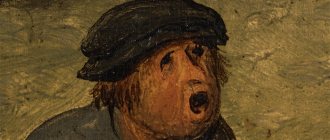Excessive concern for cleanliness, constant disinfection of door handles and switches, frequent and prolonged hand washing, special unpacking of products from the store, turning into a real quest - this is an incomplete list of what goes into the life of a person suffering from mysophobia.
Maintaining hygiene and taking care of neatness is the norm for a civilized person, but only until it becomes a pathological addiction. Mysophobia arises from fear of pollution or infection, increased attention to cleanliness.
What it is
The concept of "mysophobia" was introduced by scientist William A. Hammond in 1879, when he researched and described this condition. By his definition, this is an obsessive state of morbid fear of dirt, which is manifested by constant hand washing. This action gives a person suffering from mysophobia a feeling of control over the situation, it calms and brings temporary relief. While doing this, he only thinks about the need to have clean hands. Pathological disgust with dirty and, in the opinion of patients, dangerous objects and places leads to inadequate precautions.
Fear of germs is another type of phobia - germophobia. With it, even knowledge about the benefits of certain types of microorganisms does not reduce the state of anxiety and restlessness. This variant of phobic disorder forms a pathological connection between a feeling of insecurity, loss of control, and the need to protect one’s health and life from the impending threat of infection.
The development of mysophobia has a direct connection with the social life of a person and society. In the changes that come with the development of technology, science, germophobes and mysophobes are finding new sources of threat.
In the early 20s of the last century, people were afraid of bacteria, which claimed millions of lives. Constant cleansing and disinfection of hands, rituals for treating the body, household items, clothing, wearing gloves, certain patterns of movement around the home to avoid contact with furniture and objects, withdrawal from the environment, and as a result, loss from normal life. These manifestations of the disease deprive a person of the opportunity to become happy.
With the invention of penicillin, when most diseases caused by bacteria became curable, a new fear of viruses emerged. HIV, hepatitis, bird flu - these diseases caused by viruses frighten every person, but in people prone to anxiety, this fear takes the form of a phobia. In this case, the emphasis shifts to ways of transmitting the disease.
Possible infection through blood, saliva or sexual contact forces a person suffering from germophobia to scan risk groups (drug addicts and antisocial elements) and avoid places that pose a potential threat of infection. Thus, there is a constant search for risk factors and ways to avoid or overcome them.
A simple diagram of the development of a phobia looks like a chain of interconnected factors. Against the background of stress and the anxiety and worry associated with it, there is a desire to find a source of discomfort and danger in the external environment. Growing neurosis significantly changes a person’s behavior, up to the loss of work, friends, and final self-isolation from the outside world.
Other types of environmental fears make people afraid of technical objects and materials.
Germophobia and mysophobia, like other phobias, can seriously change your life and lead to serious consequences, which are more difficult to correct than to prevent.
Links[edit]
- Hammond, William Alexander (1879). Neurological contribution. Putnam. item 40 - via the Internet Archive.
- "Cleanliness is the rule of life for germophobes". WebMD
. Retrieved September 10, 2022. - "Bacillophobia - fear of germs". Retrieved September 3, 2014.[ unreliable source?
] - μύσος, Henry George Liddell, Robert Scott, Greek-English Lexicon
, on Perseus - φόβος, Henry George Liddell, Robert Scott, Greek-English Lexicon
, on Perseus - ^ abcd Smith, Kathleen. “Mysophobia (germophobia): are you a germaphobe?” . Psycom
. Retrieved November 17, 2022. - Thomas, Sarah (2014-03-24). "Famous Germaphobes". NHPR
. New Hampshire Public Radio. Retrieved November 17, 2019. - Lippman, Daniel (7 July 2019). "The Purell Presidency: Trump Aides Study the President's Real Red Line". Politico
. Retrieved March 3, 2022.
Causes
There is a reason for the appearance of any phobic disorders. First of all, it is a genetic predisposition to anxiety and depression. If similar cases have been observed in the family, they may also appear in relatives.
More often, germophobia and mysophobia develop in adolescence, when hormonal levels are unstable. At the same time, the natural sensitivity, suspiciousness, indecisiveness, conscientiousness, pedantry and emotionality of a teenager become especially aggravated, receive hyper-manifestations, and when combined with stress, provoke the emergence of obsessive-compulsive disorder and its particular forms - the disorders in question.
Manifestations similar to mysophobia may be a consequence of low-grade schizophrenia, epilepsy or traumatic brain injury.
Other reasons:
- childhood traumatic circumstances associated with illness;
- acquired imitative behavior;
- media information about infections and their spread;
- wider introduction of hygiene products and obsessive promotion of new and improved cleaning and disinfection products.
Often the cult of a healthy lifestyle is perceived by suggestible and anxious individuals as a need for action to achieve the image of an ideal person imposed by society. Against this background, other phobias may arise, for example, hypochondria - over-concern about one's health.
Symptoms of the disease
Germophobia and mysophobia in mild form are manifested by a feeling of tension and anxiety in a person who is in places with, in his opinion, an increased degree of pollution and threat of infection, for example, in hospitals or public toilets.
More pronounced symptoms include sweating, tachycardia, weakness, dizziness, the urge to run, to urgently do something, even panic attacks. Even awareness of the problem cannot cope with it. The feeling of being surrounded by microbes and of impending danger becomes too strong, beyond control and internal convictions about the inadequacy of the threat assessment.
Often people try to minimize symptoms or hide them from others, while others turn to specialists for help.
Symptoms of the disorder:
- excessive disgust towards dirt, fear of contact with contaminated objects;
- most activities during the day involve washing, cleaning and disinfecting the body and surrounding objects;
- cleansing rituals that take more than an hour;
- short-term calm after rituals and increasing anxiety after a short time;
- uncontrollable desire for cleanliness, even with full understanding of the exaggerated fear of pollution;
- a desire to avoid places perceived as containing too many germs;
- refusal to exchange personal belongings;
- avoiding physical contact with other persons or foreign objects;
- fear of infecting children;
- avoiding large crowds of people;
- limiting contact with animals.
Sometimes a person does not realize the destructiveness of his behavior, and perceives criticism from the outside as misunderstanding and rejection of him as an individual, which leads to a tougher attitude towards the people around him. In another case, a person suffering from mysophobia understands that something is happening differently from the majority. In these or other types of manifestations of phobias, the best solution is to consult a doctor. A correctly established diagnosis makes it possible to apply adequate treatment.
How does mysophobia manifest itself?
A classic example of mysophobia is frequent hand washing , which patients can do dozens of times a day (after each touch of “contagious” objects, for example, a door handle, after communicating with any person, after visiting public institutions, especially hospitals, traveling in public transport, etc.).
Also, mysophobes, when leaving the house, try to carry antibacterial products with them, for example, napkins, which can be used at every opportunity (and such cases arise very often). In winter, mysophobes always wear gloves and can wear a mask.
At home, they can spend hours cleaning up wherever possible, washing linen and clothes, disinfecting the kitchen and bathroom , doing everything to protect themselves from the possibility of infection. This takes a lot of strength and energy, both physical and mental, so mysophobes often feel tired and have no strength left to do other work.
To minimize the risk of infection, mysophobes do not allow people into the house, do not invite anyone to visit, do not go to public events , separate their belongings and dishes from the belongings of relatives and do not allow them to be used, and are afraid of animals.
By doing this, people do not understand that the real cause of their problem is in their head, and not in the world around them. Mysophobia makes people dependent and limited, forces them to adapt to a certain “regime”, refuse to meet with friends and acquaintances, deprives them of the ordinary joys of life, and leads to alienation and rejection by people.
Therapy methods
Most often, the disease lasts several years and is perceived by others as character traits. At first, the desire for cleanliness, neatness, caution and disgust do not affect social relationships and do not spoil life. But the disease is dangerous because ignoring the first signs aggravates its development and leads to consequences that become difficult to ignore. They become a problem for the patient and his family.
If it is established that germophobia and mysophobia have developed as a form of neurosis, then individual cognitive behavioral psychotherapy becomes the main method of treatment. It is aimed at relieving or reducing nervous tension. To do this, the doctor may recommend to the patient:
- adjust your daily routine;
- make physical activity regular;
- use relaxation and meditation techniques;
- balance your diet by eliminating alcohol and caffeine;
- yoga and breathing practices;
- communication with people who have similar problems, sharing experiences of overcoming the disease.
To treat advanced and severe forms of the disease, antidepressants are prescribed. Their short-term use has no side effects, but is effective in the complex treatment of the disease. With such neuroses, organic changes occur in the brain that are associated with disruptions in its normal functioning. Antidepressants improve organic processes and make cognitive behavioral psychotherapy more effective.
Another method of treating mysophobia is exposure therapy. This is a treatment method that is based on the action of the irritant that causes symptoms.
Short sessions with mild stimuli are gradually replaced by stronger ones. When the highest tension from meeting his fear is reached, the patient understands the illusory nature of the danger and the level of anxiety gradually decreases.
Relaxation therapy, hypnotherapy and auto-training are also used to treat mysophobia. The selection of appointments for each individual patient may vary. It all depends on establishing an accurate diagnosis, the causes of the disease, the severity and individual reactions to therapy. The support of the attending physician is very important in it, who supports the patient and helps control his anxiety.
Treatment
It should be immediately noted that it will be impossible to get rid of the panic fear of germs without the help of a qualified specialist.
Treatment of phobias, especially advanced ones, requires more time and patience on the part of the psychotherapist, as well as a great desire to change on the part of the client. The most effective methods of psychotherapy for mysophobia include the cognitive-behavioral therapeutic model. During its course, a person is gradually taught to reconsider his attitude towards fear, and is also explained how to better control his own emotions. Schwartz’s “4 steps” technique is excellent for these purposes.
It consists of the following stages:
- correctly place the emphasis (realize that obsessive hand washing is caused not by real life-threatening microbes, but by a phantom fear of getting sick);
- find the root cause of the disease;
- learn to distract yourself from the current experience of fear of dirt and focus on positive thoughts;
- reevaluate your view of the fear of germs, and also look at your behavior from the outside.
Some psychotherapists successfully use hypnosis to treat this phobia in conjunction with teaching the client autogenic training skills.
Hypnotic practices relieve the severity of symptoms, and autogenic meditations, which the client conducts independently at home, increase his self-esteem and confidence in his abilities. However, if help is aimed only at eliminating the manifestations of the phobia, and not at its causes, then after some time the symptoms of mysophobia will definitely return.











